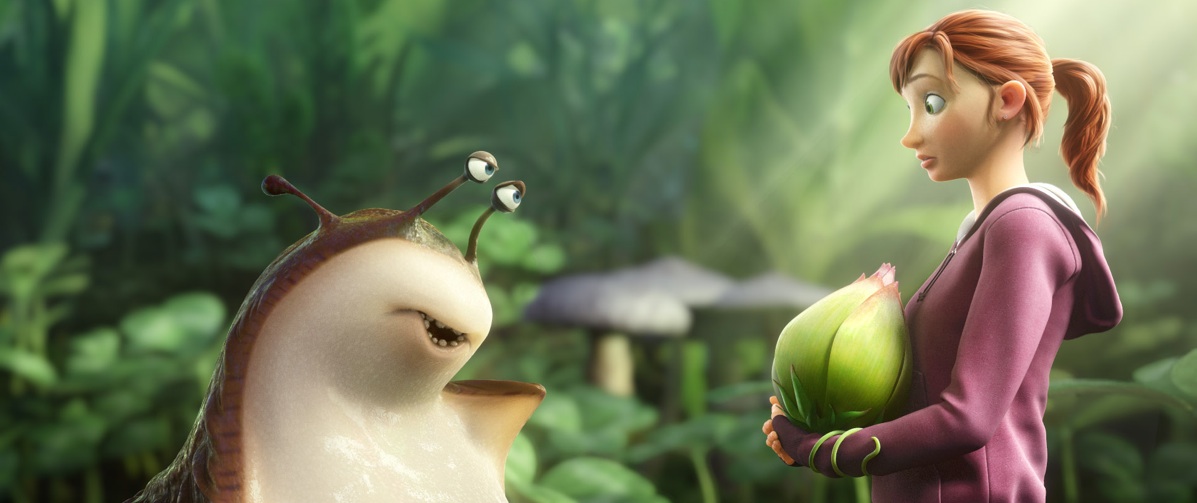The mouse encounter, experienced by characters MK and Nod in the animated film Epic, displays an inversion of the relationship between human and animal. The stereotypes that form this interconnection are depicted unusually. For example typically, and importantly not in this scene, mice are considered harmless. Inversion is done via the representation of the mouse, which conveys varying levels of dominance over the human characters in the scene.
The first instance where we see a human assumption of superiority is when MK first sees the mouse and states ‘Hi mousie… I was going to scare it away’, a supposition of strength. The mis-en-scene at this moment is important as MK stands positioned above the mouse, looking down into its eyes. She performs a form of parent-like affection, as if speaking to her child. The pet term ‘mousie’ that she uses reflects this notion. She states ‘look at its little hands and its little whiskers’, proceeding to stroke its face. It is this that provokes the mouse’s reaction. It raises itself above MK and gnashes its teeth, a display of power seen via the space taken up in the frame.
The mouse’s reaction is a refusal to accept MK’s interactions, a rejection of the cute ‘pet’ stereotype associated with mice. The mouse undertakes the role of wild animal instead, one that instils fear in humans. Despite this, later comments such as ‘nice tail: flexible’ help to counter the mouse’s advances – a friendly jibe that acknowledges the threat and yet dismisses it. Subtle remarks such as this one help to regain and re-establish human control.
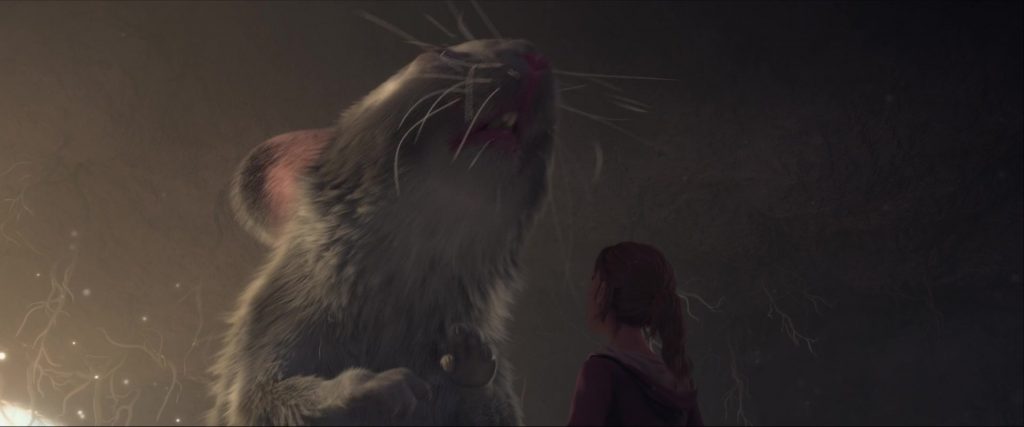
Figure 1 – The mouse becomes vicious and rears its head 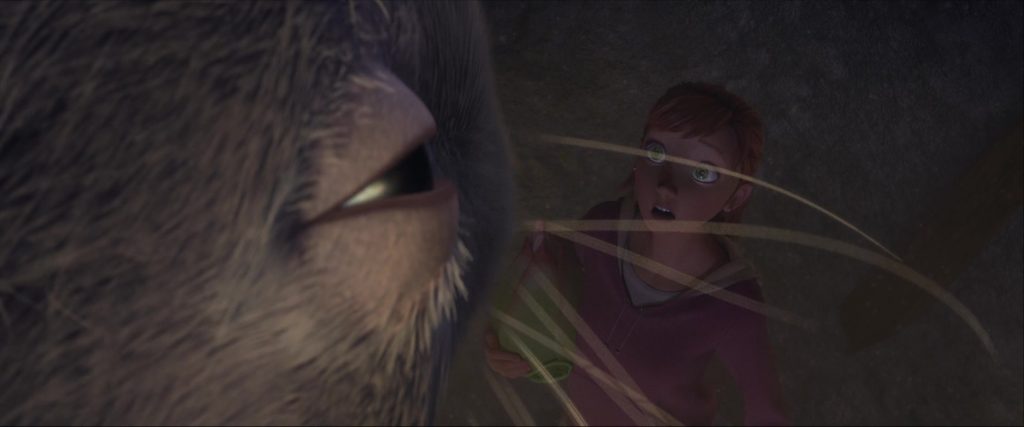
Figure 2 – MK looks up in fear
Another feature of the scene is the use of light, utilised to convey the idea of territory – demonstrating the manipulation of animal and human space. For example, the appeal of the left side of the frame, representing the human territory, is emphasised by specks of light glowing in the background. We see the mouse emerge from its shadowed den and cross over to where MK stands in the light, circling her and forcing her to switch sides. The mouse seizes the space for itself as it raises itself above MK, preventing the light from reaching her and enveloping her in its own darkness. The ownership of light and space here, as in the rest of the film, is predatory.

Figure 3 – Mouse seen in darkness 
Figure 4 – Mouse seen in the light
The second half of the clip demonstrates a tension between a traditional human hegemony, and the new contesting animal force. By grabbing the tail of the mouse to hold it back, an act which could be compared to the use of reins, Nod attempts to clarify his own governing force. Undermining Nod’s ‘trainer’ approach, MK lies in a weakened state below the mouse; she adopts the role of prey. Her child-like giggles and repeated retort of ‘fuzzy mousie’ contrast the other diegetic sound in the scene such as the mouse’s dog-like roars. This depiction of MK as the helpless damsel complements the title of the film, and therefore the gender dynamics of the traditional ‘epic’ genre. The mouse helps Nod to conform to this stereotype.
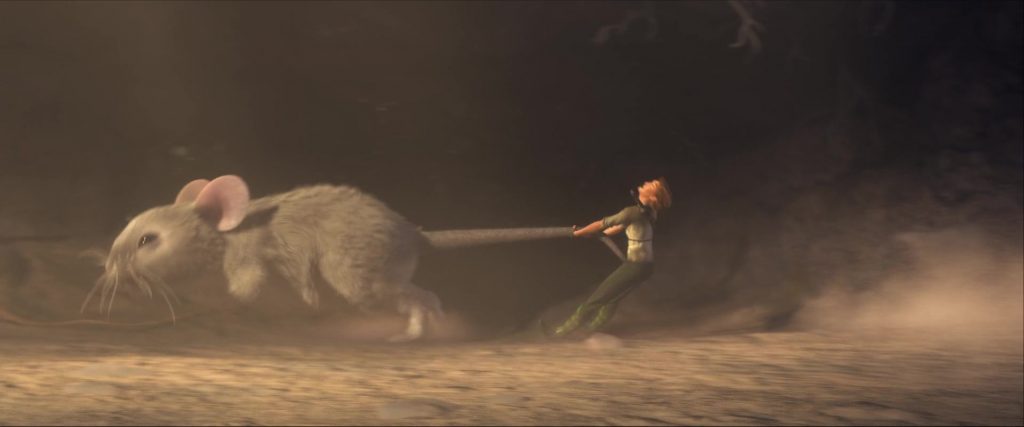
Figure 5 – Nod attempting to rein in the mouse 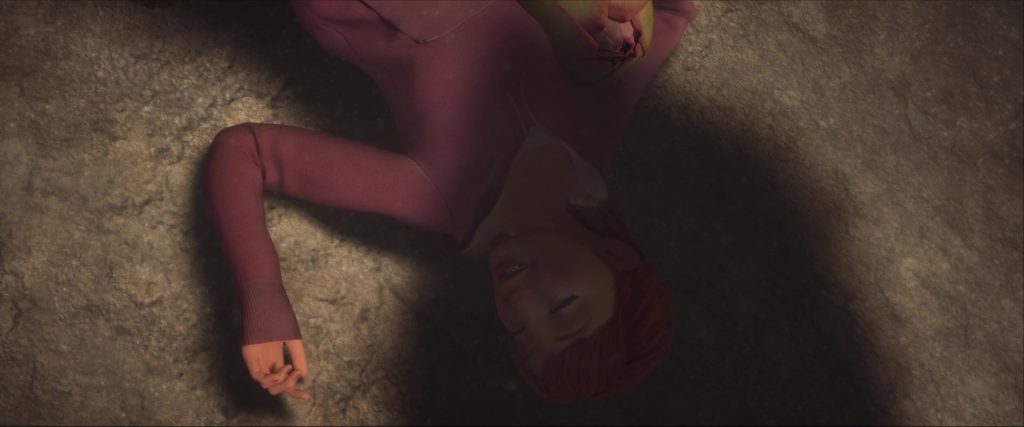
Figure 6 – MK lies in the mouse’s shadow
Without the proof of otherwise, MK views the mouse once again as cute, a reversion to her own human nature. Despite being very different in approach, both actions displayed by the characters, whether verbal or physical, belittle the mouse to a position below them. Thus, the concepts of not only animal versus human, but also predator versus prey, are demonstrated throughout the film. A transgression of these boundaries is seen, where human becomes prey and prey becomes predator. Overall, this scene is a moment of subversion for the audience that challenges typical human animal behaviour – which is put to a halt by the light-hearted jeers of the film’s protagonists.
